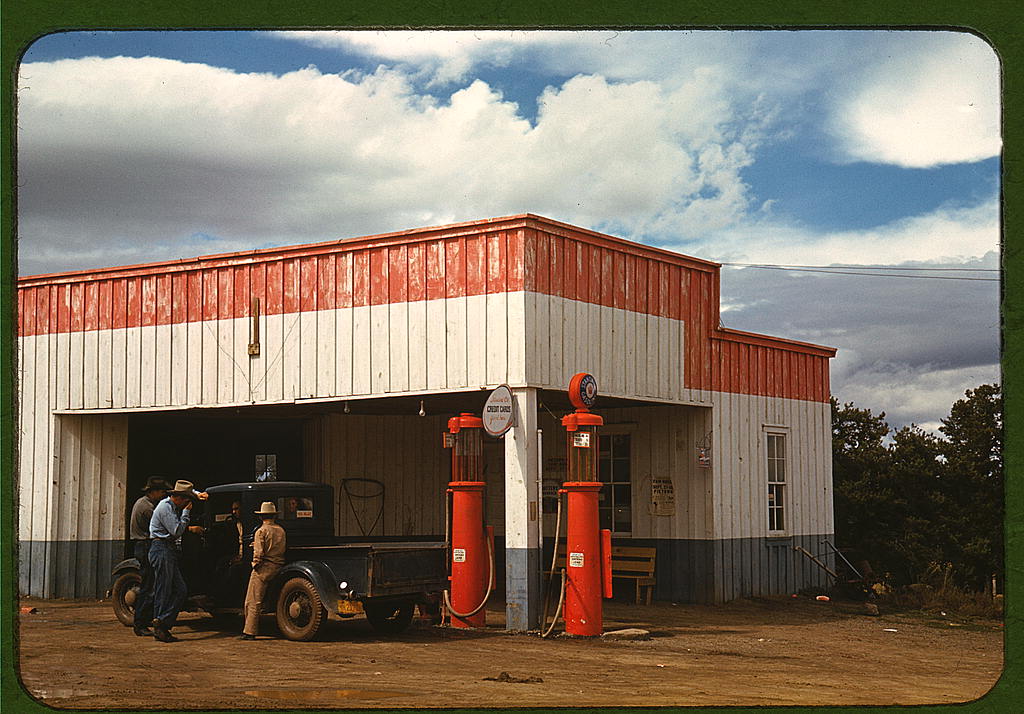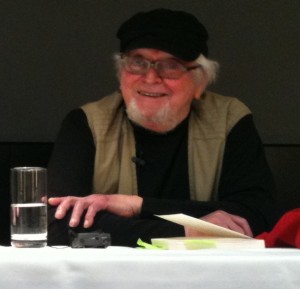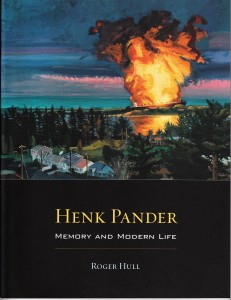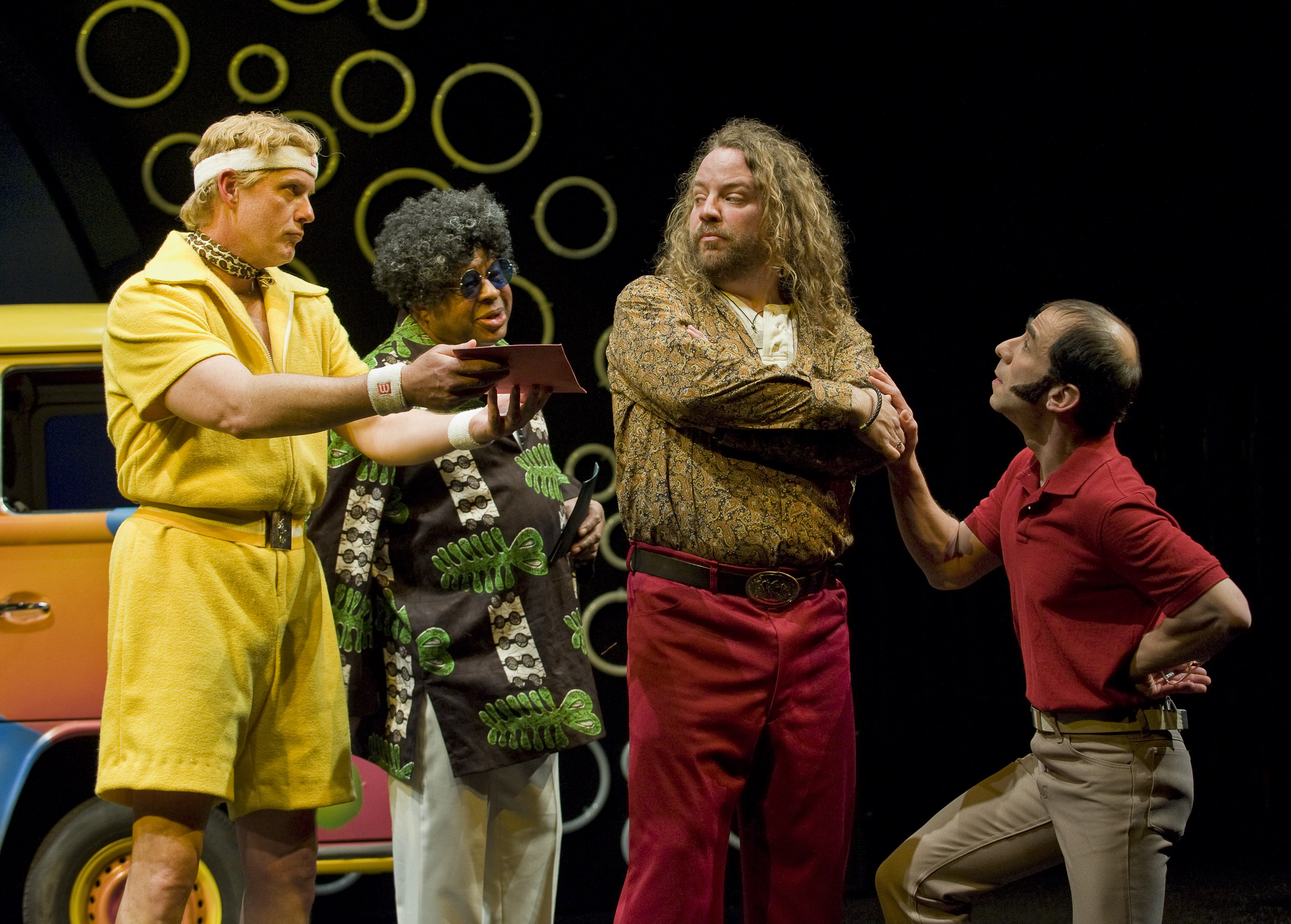
In honor of the guerrilla tactics of people climbing onto MAX trains without wearing pants, we’ll pretend we have an important news angle and tell this tale:
My brother* showed up at my house wearing pajama pants.
We hugged. He hauled his suitcase into the guest room. He was casual for a while and then felt compelled to come clean. He looked away, paused a long time, then said, “Ummm … I hate to tell you this …”
Slowly, he started to tell how a short way into his long drive he had stopped to fill the gas tank. He was in a certain state to the north of Oregon** where people have to fill their own tanks. He didn’t want to get his hands dirty and smell like gasoline for the whole trip so he used a paper napkin to grip the pump.
The gas tank filled. As he removed the pump the napkin started blowing around so he grabbed it, accidentally engaged the pump and spilled gas all over his pickup truck and pants.
Scrunched in the cab, he opened his suitcase and got out his pajama bottoms.
 As he was taking off his pants they started to vibrate. His phone was ringing.*** It was his daughter.
As he was taking off his pants they started to vibrate. His phone was ringing.*** It was his daughter.
“Where are you, Dad?”
“I’m, uh, at a gas station.”
Of course, he was neglecting to provide a key piece of information. One tiny prepositional phrase would have made that statement completely truthful. So let’s try it again. What he really should have said was:
“I’m, uh, at a gas station … IN MY UNDERWEAR!”
He finished the call and changed his pants. He stuffed the gas-soaked pants into a large, black plastic garbage bag.
He continued on his way. The cab smelled like gas. He pulled over.
He put the black plastic bag in the back of the pickup.
He continued on his way. The black plastic bag started blowing around. He pulled over.
To anchor the black plastic bag, he wedged (wedgied?) it in the side of the tailgate and shut it. He complained how putting up the tailgate produced extra drag and lowered his gas mileage. (Did he miss the irony of producing extra drag?)
Then he came to why he was telling me all this (as if he could keep quiet and not give me blackmail fodder for the rest of his life): “I’m not sure what to do with my pants.”
I stopped laughing long enough (not really) and went to the Google and typed in “How to get gas out of pants.”****
Of course I was being goofy, and was slightly disappointed Large Smelly Boys didn’t pop up on top, but the first item was titled, no kidding, “How to get gas out of pants.”*****
Tip No. 1 suggested laying the pants out in the sun. Like that’s going to happen in January in Oregon.******
We looked out the window at the rain. We considered how attractive a pair of smelly jeans would look splayed out on the front porch. We decided to hang them in the garage.
After a brief discussion about spontaneous combustion, I got the key, opened the industrial-strength lock on the garage and my brother hung the pants over a handcart.
Afterward, he settled in at the dining table with his pajama pants and a warm drink. Like he really needed to say it, but he did anyway, thankfully giving me a great quote: “You know the whole irony of it? I was trying to keep my hands clean.”
Epilogue: He left yesterday. As he was packing up, he asked – you can’t make this stuff up –” “Do you have the key to my pants?”*******
***************
* Yes, Art Scatter regulars will know him as the same brother who has sprayed cold water on me with a garden hose while I was in a second-story shower and cleaned puked pasta out of my sink.
** Geography points if you can name the state above Oregon.
*** Imagine the headline: “Cell Phone Ignites Pants.”
**** For journalistic integrity, I really typed in “How to get gasoline out of pants,” but who cares?
***** For journalistic integrity, it was really titled “How to get gasoline out of clothing,” but who cares?
****** Geography points if you can name why it’s nearly impossible to lay out gasoline-soaked pants in the sun in January in Oregon.
******* Extra credit if anyone has the key to his pants.
***************
My brother was worried about telling me all this because he didn’t want a big public ordeal. I promised I would only tell his story, show his picture, and give his name, phone number and e-mail.
I was kidding him, but here’s a picture of him anyway:

I was kidding him, but here are his initials anyway (props to the Large Smelly Boys and Mr. Scatter):
Tough Rat Gonads
Two Rowdy Gerbils
Twin Reproductive Glands
Terminate Religious Guppies
Tranquilizer Reaches Gut
Testosterone Rattles Girlfriend
Totally Real Gore
Teacher’s Really Gruesome
Toss Rocks at Goliath
Teeth Get Rotten
Totally Rad, Girl
The Robust Girls
That Rascally Gal
Tch! Really, Guys?
Timberwolves Rally Gazillions
Tiny Rectal Glitch
Tonic Rattles Gizzards
— Laura Grimes
***************
PHOTOS, from top:
- This is not the station where Laura’s brother stopped to gas up. Nor is this his pickup, although he might prefer it. And the men hanging around did not help him change pants. But the photo was taken in Pie Town, New Mexico, in 1940, and we don’t get many chances to type “Pie Town.” Photo: Russell Lee via Library of Commerce. Wikimedia Commons.
- These are not the pants that got soaked with gasoline when Laura’s brother was trying to be all Felix Unger. But we think it’s nice that the parts are labeled. Wikimedia Commons.
- Laura and her brother. She was the adoring kid sister even back then.
 Exactly.
Exactly. T. Charles Erickson/OSF
T. Charles Erickson/OSF
 So let’s play catch-up.
So let’s play catch-up. At his perch on the news desk, Charlie was known to lightly mock certain passages of flowery writing as he slashed through copy with his big black pencil. Sometimes he’d sigh or giggle and choose to overlook a phrase that not so privately drove him crazy: He knew which writers had permission to roam and which did not. But that didn’t stop him from pulling out his inkpad and his favorite stamp and branding the hard copy with his own gleeful judgment. The type was in a florid, immediately post-Gutenberg, barely readable old gothic. “WRETCHED EXCESS,” it said.
At his perch on the news desk, Charlie was known to lightly mock certain passages of flowery writing as he slashed through copy with his big black pencil. Sometimes he’d sigh or giggle and choose to overlook a phrase that not so privately drove him crazy: He knew which writers had permission to roam and which did not. But that didn’t stop him from pulling out his inkpad and his favorite stamp and branding the hard copy with his own gleeful judgment. The type was in a florid, immediately post-Gutenberg, barely readable old gothic. “WRETCHED EXCESS,” it said.
 As he was taking off his pants they started to vibrate. His phone was ringing.*** It was his daughter.
As he was taking off his pants they started to vibrate. His phone was ringing.*** It was his daughter.






